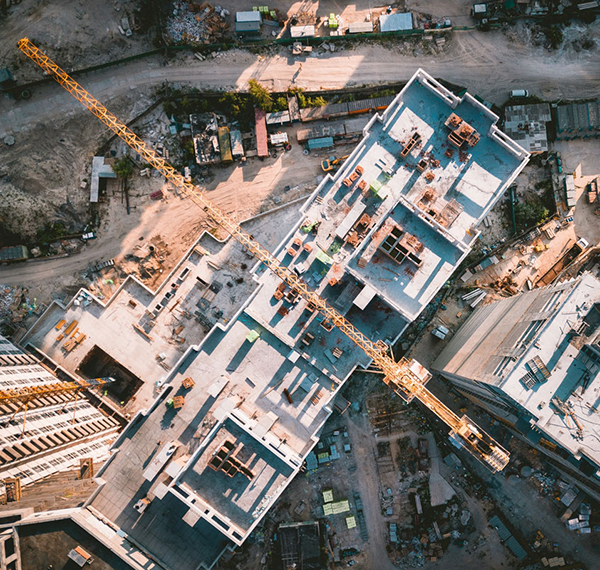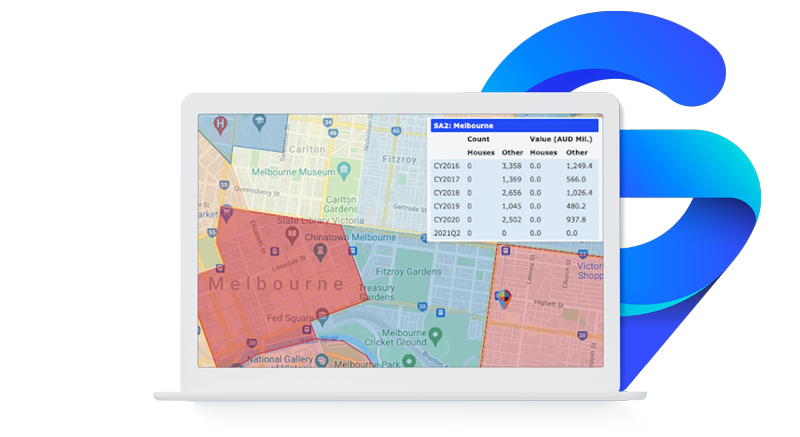Why you should be looking at Building Approvals when planning ahead for your business
Did you know that since 2016, at least 11,702 new units were built within a 3km radius of Green Square station in Alexandria, NSW? That may not sound significant as a random fact, but in 2016 that 3km radius had a population of 184,000. In 2021 that population had grown by more than 24,300.
And it’s not just the number of people living in this 3km radius that has changed. The age demographic, ethnic diversity and travel patterns of those residents has all changed with the construction of those units. The demand for supermarkets, restaurants, GP clinics, public transport, car parking and so on, has shifted dramatically. Even things like tax agents and legal representation are affected by this kind of population growth.
This is why building approvals data is so important.

While it’s traditional for population growth to happen on the fringes of any urban area, there can be trends that emerge from building approvals that show inner suburban areas changing in terms of age demographics and service needs and wants. So finding where the next opportunity may be isn’t as simple as it may seem. Effective forecasting requires a more informed approach.
Forecasting for a suburb
If you really want to forecast what the future of a suburb will look like, you have to look at what’s actually being built. Development Approvals (DAs) aren’t sufficient by themselves, because DA’s can be abandoned, used for speculation or not be approved.
In contrast, you have to complete construction of a project within two years of getting a building approval. So these approvals are a much better indicator of what is going to happen to a suburb in the immediate future.
And sometimes the data can be a little surprising. While it’s traditional for population growth to happen on the fringes of any urban area, there can be trends that emerge from building approvals that show inner suburban areas changing in terms of age demographics and service needs and wants. So finding where the next opportunity may be isn’t as simple as it may seem. Effective forecasting requires a more informed approach.
Where will the next major population growth happen?
As part of the continuing development of GapMaps, we have been adding meaning to the building approvals data held in our systems. The data is updated quarterly, so we are seeing some really interesting trends in construction. And in a recent search we’ve identified a number of other suburbs in Australia that are going to experience something like Alexandria’s population growth in 2021.
One of these suburbs is Melbourne CBD. And as you can see below, there have been 2,500 building approvals that have come through just in the last year. We also can see the detail on a year by year basis, if the growth has been consistent. And if not, we can see when it started to fall away. But that begs the question, what will that mean to the demand for retail, medical and childcare?

We could speculate that these new units are going to result in a population explosion. But here’s the thing: there’s also a massive need for retail and services to this new community. And so far, there’s not enough to serve the people likely to be moving into Melbourne CBD.
This looks to us like a clear opportunity. Supermarket chains, restaurants and cafes, general practice clinics and allied health providers can all set up and get established in the area, or expand their offerings. And there’s a really short window of planning ahead for the growing community.
Summing it up
With building approvals data you can better understand where to locate your next business outlet. And you can better understand how your existing business is going to be affected by changes in the local area. It’s the kind of business intelligence that can be key to maximising the profitability and service focus for your business.
If you’re interested in seeing more about how building approval changes in the area where you are located are going to affect your business, speak to your GapMaps Client Manager or if you’re new to GapMaps get in touch to find out more.





